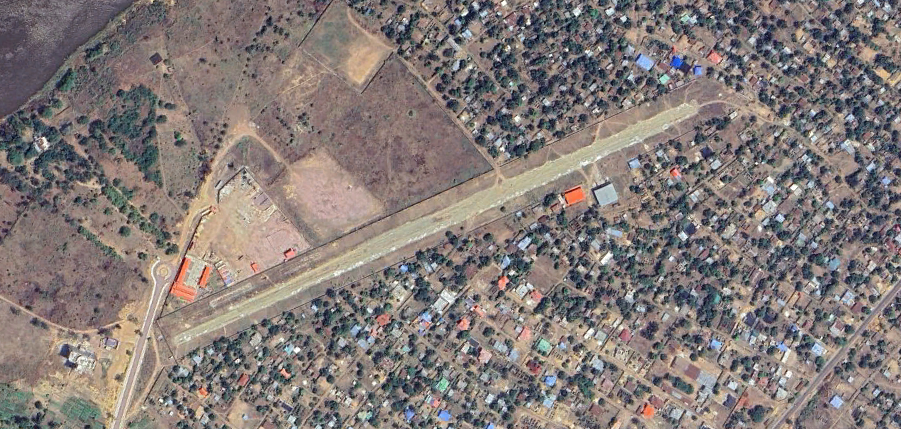Maluku Airport (FZAC)
Location: Maluku, Kinshasa
Status: Possibly inactive, but appears usable
ICAO Code: FZAC
IATA Code: none
Coordinates (verified): -4.070861°, 15.543336°
Maluku is a community located approximately 40 kilometers north of Kinshasa, on the eastern bank of the Congo River. Originally a small village, it has transformed into a distant suburb of the capital, experiencing enormous population growth over the past decades. Maluku is historically significant as one of the locations where former president Mobutu Sese Seko attempted to develop heavy industry in the 1970s.
During this period, a large steelworks plant was established, intended to boost local production. However, the project ultimately failed, as the plant could only process imported ore and was unable to function efficiently. Another industrial initiative in the area was the construction of a sawmill, which had a longer operational lifespan and was still in use at least until 2016. The collapse of these industries led to widespread unemployment in Maluku, causing economic stagnation.
In recent years, there have been repeated attempts to revive Maluku’s industrial potential. One such initiative is the establishment of the Zone Économique Spéciale de Maluku, a designated special economic zone aimed at attracting investment. Under the administration of President Félix Tshisekedi, there have also been proposals to restart cement production in Maluku’s factories, which could potentially breathe new life into the region’s economy.
Historical Background
The ICAO code for Maluku Airport is FZAC. Since C is the third letter of the alphabet, and ICAO codes in the Congo were assigned alphabetically, this suggests that the code was either assigned very early on or later re-assigned. Indeed, further research reveals that Maluku held significance during the colonial era, serving as the site of a hospital, a military camp, and a prison for the entire former Bas-Congo region (source).
It is therefore likely that the airport’s construction was not part of Mobutu’s industrialization projects at Maluku, but predates them. However, the airport neither appears on the 1966 Joint Operations Graphics published by the U.S. Defense Mapping Agency, nor is it included in the 1996 U.S. Tactical Pilotage Chart. This absence is particularly strange given that Maluku Airport’s runway is paved, a rare feature among small airports in the Congo. No explanation for its absence from aeronautical charts has been found.
Current Status (as of 2025)
Unlike many small airfields in the Democratic Republic of the Congo, Maluku Airport has a paved runway. However, following the economic decline of Maluku, the airport has been left without maintenance for many years. The runway remains clearly visible in aerial imagery, and while its surface is deteriorating, it is still likely to be usable. The airfield includes a single large hangar building, but its overall infrastructure appears to be in poor condition.

Due to the relatively short distance between Kinshasa and Maluku, the need for an airport in the area is questionable, which explains its extremely low usage. Recent satellite imagery shows significant wear on the asphalt, and the lack of activity suggests that there has been no serious effort to restore the facility.
Interestingly, while the airport infrastructure is in decline, the land itself has been preserved, as no redevelopment has taken place on the site. The most recent aerial imagery reveals new construction projects around Maluku, including large warehouses and industrial facilities. These developments may be linked to President Tshisekedi’s cement production initiative, but even if economic activity in Maluku increases, it remains uncertain whether the airport will have any role in its future.